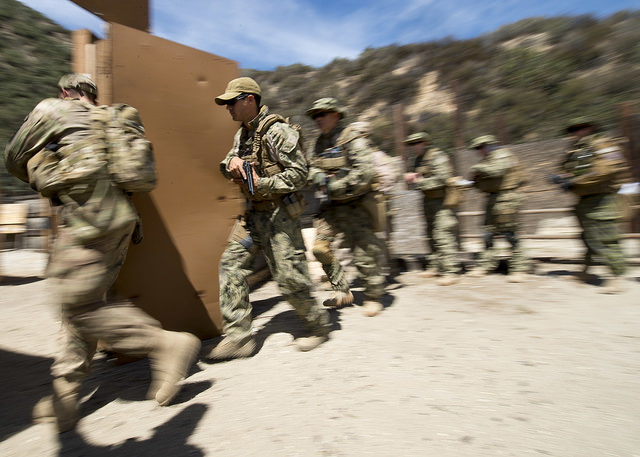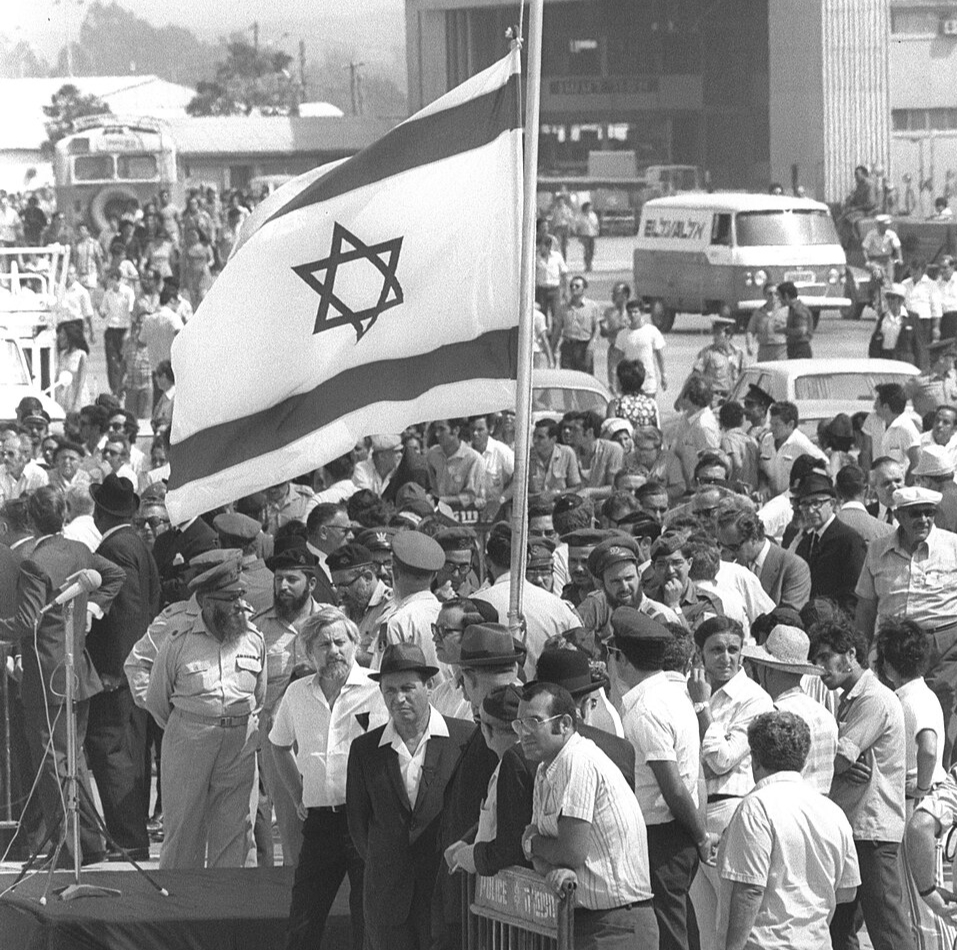Postponing the Tough Questions Until It's Too Late: How Not to Assist the Rebels in Syria
In recent days, legal blogs have carried commentary on whether or not the President has the legal authority to defend the Syrian rebels that the United States has trained and equipped to take on the Islamic State (see here and here).

Published by The Lawfare Institute
in Cooperation With

In recent days, legal blogs have carried commentary on whether or not the President has the legal authority to defend the Syrian rebels that the United States has trained and equipped to take on the Islamic State (see here and here). It’s a question that until recently, the Administration itself was unprepared to answer. And it’s an important question, not just because its answer has the potential to drive the United States deeper into armed conflict in Iraq and Syria; or because it reveals some fundamental change in the Congressional-Executive dynamic over war powers; or because it betrays some newfound problem in the United States’s interpretation of international law.
The problem with not knowing the answers to the question—or more specifically, with pulling the trigger before coming up with an answer—extends far beyond a theoretical argument over war powers. As a practical matter, not knowing seriously hobbles our ability to wage war effectively.
A timeline here is illustrative. In September 2014, Congress approved of the train and equip program for three purposes (which was reauthorized and funded in December 2014):
defending the Syrian people from attacks by the Islamic State of Iraq and the Levant (ISIL), and securing territory controlled by the Syrian opposition;
protecting the United States, its friends and allies, and the Syrian people from the threats posed by terrorists in Syria;
and promoting the conditions for a negotiated settlement to end the conflict in Syria[.]
By December, the program was in full swing, with authorities beginning a vetting process which would allow rebels to become members of the global coalition against ISIS. While the training had not yet started, hopes were high: officials expected as many as 5,000 fighters to pass through the training in a year. 3,700 people had volunteered. But by May, the Daily Beast reported that thousands were withdrawing their candidacies. Hundreds more were never approved through the vetting process. By the end of June it was revealed that the United States had trained fewer than 60 moderate Syrian rebels---a far cry from what would be necessary to take on the 30,000 plus ISIS fighters in the field.
Why the failure? Well, for starters, the recruiting pitch was never that good. It comprised a mix of strange policy constraints, on the one hand, and confusion about U.S. legal power, on the other.
Instead of training rebels to fight and establish a peaceful and moderate Syria, they were required to pledge to avoid confrontation with the regime of Bashar al Assad and fight only the Islamic State. In return, what would they get? Some training and some light arms. But what about once the training ended? What if they crossed the border and were pounded by barrel bombs or mobs of ISIS beheaders? No one was quite sure.
That wasn’t all. In March Secretary of Defense Ash Carter told the SFRC that the Administration had not yet made a legal determination as to whether it had the authority to protect the new Syrian forces from the Syrian government. Again, four months later in July, in a response to Lindsey Graham (R-SC) on whether or not the Administration had “the legal authority to protect the troops we train against Assad,” Secretary Carter said he wasn’t “sure about the legalities” of defending Division 30. Four months should have been long enough to anticipate the question.
Earlier in the same hearing, Senator John McCain asked if the U.S. would defend the the new Syrian troops against barrel bombing. The exchange was telling:
"Well, that decision will be faced when we introduce fighters into the field," Carter said.
"Well, that's of small comfort to those people you're recruiting right now -- that that decision will be made later on," McCain replied. "Is that -- is that fair to these young men to say we are sending you in to fight ISIS only, and by the way, we will decide on the policy whether to defend you if you are barrel bombed?"
"They know that we will provide support to them," Carter said. "Exactly what kind of support under--"
"Does that mean you will defend them against Bashar Assad's barrel bombing? Mr. Secretary, this is not a very pleasant exchange," McCain said. "I'd like to have answers to questions. Will we tell them that we will defend them against Bashar Assad's barrel bombing?"
"I think we have an obligation to help them when we equip them," Carter repeated.
"Will we tell them that?" McCain asked.
"We have not told them that yet," Carter responded.
"You have not told them that," McCain repeated. "So you're recruiting people and not telling them that (we're) going to defend them because you haven't made the decision yet, and yet you want to train them quickly and send them in."
That was in July. A decision would not come for another very costly month.
In fact, Carter was prescient in his remarks. It was indeed not until after Division 30 was engaged on the ground that the Administration came out with its public line, deciding that they would defend the new Syrian troops against ISIS, al Nusra, or (importantly) attacks from Assad. Within days though, the group was decimated. The Pentagon now says that the status of those not killed or captured is “unknown,” but apparently they may just turn back up later, one senior defense official optimistically told the Wall Street Journal.
All this well illustrates the calamity of shooting first, while delaying the hard policy and legal questions until later.
It was a recipe for disaster. Almost a year after Congressional approval, the deployment of the rebels was so confused that we gave them the ability to call in airstrikes, but not the authority to do so. And even today, the Washington Post quotes a senior defense officials as saying “a lot of questions are being asked” but that they just don’t know yet how the New Syrian Force fits in with current conditions on the ground or the new “safe zone.” It should not surprise anyone that this incoherent directive, together with the United States’ figure-it-out-later stance towards defense against the Syrian government, failed to convince many in that camp to become “mercenaries for the coalition.” Small wonder: In the minds of many rebels, a refusal to fight Assad would be a betrayal of the revolution.
So here’s a lesson: If the United States feels compelled to tell rebels or insurgents what they can and can’t do on the battlefield, then it should also feel a responsibility to tell them, in advance, whether and to what extent U.S. personnel will join the fight against their adversaries—non-state and state actors alike. That, in turn, requires a prompt, clear and public drawing of legal boundary lines, before training programs get up and running or tanks get rolling. Without all this, we cannot realistically expect an enthusiastic response from those we train to fight. And after all, at this moment, the onus of the Syrian ground war is on them.




